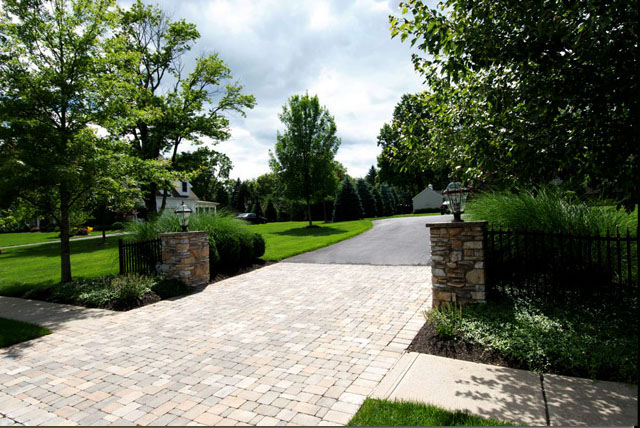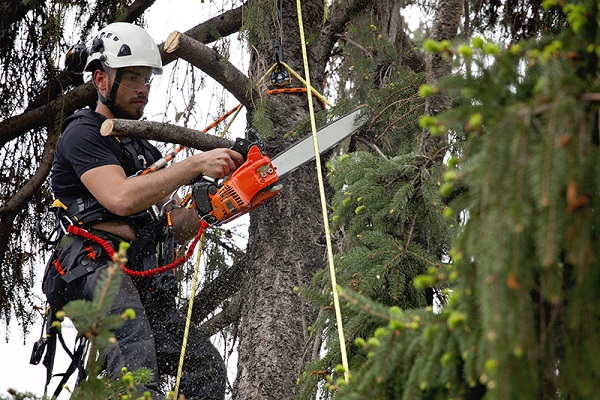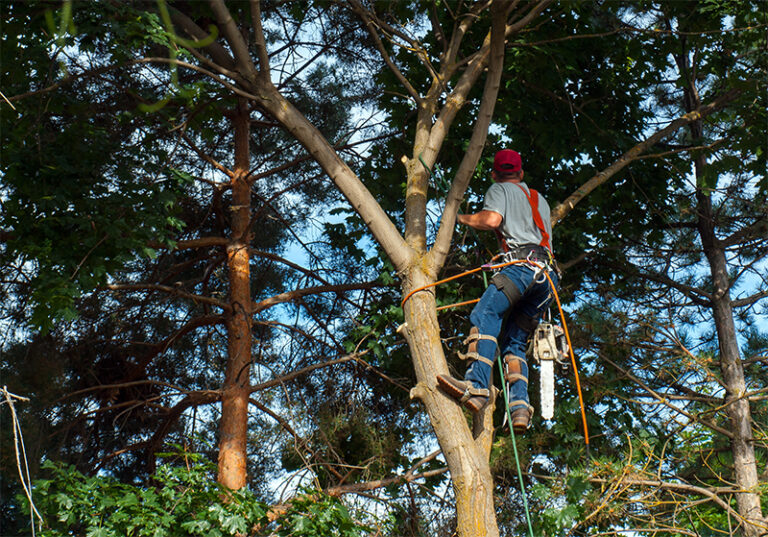Season-By Season Tree Maintenance Checklist: Year-Round Tips From NJ Expert
Regular seasonal tree care prevents disease, structural damage, and costly removals. Each season requires specific maintenance tasks that extend tree life, boost property value, and enhance aesthetics. Professional care identifies early warning signs before small issues become major problems.

Key Takeaways
- Regular seasonal tree care prevents disease, pest infestations, and structural damage that could threaten your property
- Each season requires specific maintenance tasks to address changing tree needs throughout the year
- Professional tree care can identify early warning signs of issues before they become costly problems
- Well-maintained trees significantly increase property value and enhance landscape aesthetics
- Strategic mulching, proper watering, and seasonal pruning extend your trees’ lifespan by decades
Why Your Trees Need Seasonal Attention
Trees aren’t static landscape decorations – they’re living organisms with constantly changing needs. Just as you wouldn’t wear a winter coat in summer, your trees require different care as seasons shift. Neglecting these seasonal requirements can lead to stunted growth, susceptibility to disease, and eventually premature death.
Seasonal tree care experts understand that trees face unique challenges throughout the year. From spring’s rapid growth to winter’s harsh conditions, each season presents both opportunities and threats to your trees’ health. Regular maintenance isn’t just about aesthetics – it ensures your trees thrive for generations.
Seasonal care transforms ordinary trees into spectacular specimens that enhance your property’s beauty and value. When you understand the rhythm of tree care throughout the year, you’re not just maintaining trees – you’re nurturing living assets that appreciate over time.
Health Benefits of Regular Tree Maintenance
1. Disease Prevention and Recovery
Regular seasonal inspections catch problems before they become severe. Just as preventive healthcare visits help humans avoid serious illness, seasonal tree checkups identify early signs of disease. Professional arborists can spot subtle symptoms like leaf discoloration, unusual bark formations, or early signs of pest activity that untrained eyes might miss.
When issues are caught early, treatment is typically more effective and less expensive. For instance, addressing a fungal infection in its early stages might require simple pruning rather than extensive chemical treatments or complete removal later.
2. Enhanced Growth and Structure
Seasonal pruning isn’t just about removing dead branches – it’s strategic growth management. Proper pruning techniques direct energy to the most important branches, allowing trees to develop strong, balanced structures. This deliberate shaping prevents weak branch attachments that could become dangerous in storms.
3. Increased Lifespan
Trees that receive proper seasonal care live dramatically longer than neglected ones. Consistent maintenance addresses small issues before they develop into life-threatening problems. For example, removing deadwood prevents decay from spreading to healthy tissue, while proper fertilization ensures trees have the nutrients needed to fight off infections naturally.
By addressing seasonal stressors promptly, trees develop stronger natural defenses. Like humans who maintain good health habits throughout life, trees with regular care show remarkable resilience against environmental challenges.
4. Improved Appearance Year-Round
Well-maintained trees don’t just live longer—they look better throughout their lives. Strategic seasonal pruning enhances natural form while removing unsightly dead or diseased portions. Proper fertilization at the right times promotes vibrant foliage and abundant flowering.
This consistent care creates a landscape that looks intentional and polished in every season. Even in winter, trees with good structure provide appealing silhouettes against the sky, while proper fall care ensures spectacular color displays before leaf drop.
Season-by-Season Care Guide
1. Spring Revival Tasks
Spring is the season of renewal for trees. As they emerge from dormancy, it’s the perfect time to:
- Remove dead, damaged, or diseased branches before new growth begins
- Apply slow-release fertilizers to support the energy demands of leaf and flower production
- Inspect for signs of winter damage or early pest activity
- Install mulch rings (but never volcano mulching against the trunk)
- Begin regular watering schedules for newly planted trees
Spring pruning should focus on safety concerns and structural issues. Major pruning is best completed before buds break to minimize stress on the tree.
2. Summer Protection Strategies
Hot, dry summer conditions create unique challenges for even established trees. Key summer tasks include maintaining consistent deep watering schedules, especially for young trees, and monitoring for insect activity. Regular inspections can catch pest problems early when they’re easier to treat.
Summer is also when you should refresh mulch to maintain soil moisture and regulate root temperature. Avoid unnecessary pruning during this season as it can stress trees during their peak growth period. The full canopy provides an excellent opportunity to observe growth patterns and plan future structural pruning needs.
3. Fall Preparation Methods
Fall maintenance prepares trees for winter’s harsh conditions:
- Remove dead or weakened branches that could break under snow and ice loads
- Clear fallen leaves from lawn areas to prevent disease spread
- Apply light fertilization if soil tests indicate deficiencies
- Gradually reduce watering for established trees to help trigger dormancy
- Plant new trees, giving roots time to establish before winter
Fall is also the ideal time to perform major pruning on many species, as trees are entering dormancy and wound closure will be optimized.
4. Winter Safeguarding Techniques
While trees appear dormant in winter, they still need protection. Install guards around young trees to prevent rodent damage and inspect for snow and ice damage after storms. Avoid heavy pruning during extreme cold, which can cause additional stress.
Winter is an excellent time to assess overall tree structure when leaves don’t obscure branch architecture. Professional arborists can identify potential structural issues that might not be apparent during growing seasons.
Costly Tree Care Mistakes to Avoid
1. Improper Pruning Techniques
Incorrect pruning causes more long-term damage than almost any other maintenance mistake. Common errors include topping trees (cutting branches back to stubs), removing too many branches at once (never more than 25% of canopy), and making flush cuts against the trunk instead of at the branch collar.
Improper cuts create entry points for decay and disease while potentially compromising the tree’s structural integrity. Always consult arboricultural standards or professionals before major pruning.
2. Over/Under Fertilization
Many homeowners either neglect fertilization entirely or apply too much in hopes of accelerating growth. Both approaches damage trees in different ways:
- Excess fertilizer can burn roots and stimulate unsustainable growth
- Too much nitrogen promotes weak, fast growth susceptible to breakage and pests
- Fertilizing at the wrong time can stimulate growth when trees should be preparing for dormancy
- Under-fertilization in poor soils leads to nutrient deficiencies and weakened defense systems
The solution is soil testing before fertilization and following species-specific recommendations for timing and application rates. Slow-release organic options are generally safer than quick-release chemical fertilizers.
3. Inconsistent Watering Practices
Improper watering ranks among the most common causes of tree stress. New trees particularly suffer from inconsistent moisture. Problems include frequent shallow watering that encourages surface roots vulnerable to drought and heat, and overwatering that leads to root rot and oxygen starvation.
Establish consistent deep watering routines that encourage roots to grow downward. Always check soil moisture before watering rather than following a rigid schedule, and adjust based on seasonal needs and precipitation levels.
4. Ignoring Early Warning Signs
Trees communicate distress through visible symptoms that often go unnoticed until problems become severe:
- Leaf discoloration, wilting, or early drop
- Bark abnormalities like cracks, seeping, or unusual growths
- Mushrooms or conks growing from roots or trunk
- Declining annual growth or thinning canopy
- Excessive deadwood throughout the crown
Regular inspections by knowledgeable professionals catch these warning signs early. Most tree problems are treatable when identified promptly but become irreversible when ignored for too long.
Property Value and Safety Advantages
1. Storm Damage Prevention
Structurally sound trees withstand severe weather that would damage or destroy neglected specimens. Regular maintenance identifies and addresses weak branch attachments, decay pockets, and structural imbalances before storms exploit these weaknesses.
Properly maintained trees rarely fail catastrophically. When they do shed material during extreme weather, it’s typically smaller branches rather than major limbs or entire trees. This significantly reduces the risk of property damage, power outages, and personal injury during storms.
2. Pest and Disease Resistance
Healthy trees naturally resist pests and diseases that quickly overwhelm stressed or weakened specimens. Regular care creates conditions where trees’ natural defense mechanisms function optimally.
When infestations do occur, early detection through regular monitoring allows for targeted interventions that protect not just the affected tree but others in the landscape. This prevents widespread problems that require extensive treatments or multiple tree removals.
3. Enhanced Curb Appeal
Well-maintained trees with proper structure, healthy foliage, and appropriate size for their location dramatically enhance property aesthetics. This visual appeal creates positive first impressions for visitors and potential buyers.
Studies consistently show that mature, well-cared-for trees can increase property values by 7-19%. This return on investment far exceeds the cost of regular maintenance, making seasonal tree care one of the most financially rewarding landscape investments.
4. Long-Term Investment Protection
Mature trees represent significant financial assets that appreciate over time—unlike most other landscape elements that depreciate. A single large, healthy shade tree can be valued at thousands of dollars depending on species, size, and location.
Regular maintenance protects this investment and allows trees to reach their full potential size and longevity. The minimal cost of seasonal care pays tremendous dividends in preserved and enhanced tree value over decades.
Creating a Thriving Tree Ecosystem
1. Strategic Mulching Techniques
Properly applied mulch creates ideal growing conditions for trees by maintaining consistent soil moisture and temperature, suppressing competitive weeds and grass, and adding organic matter to soil as it decomposes.
Apply organic mulch in a circular bed extending 3-6 feet from the trunk (or to the drip line for larger trees). Maintain a 2-4 inch depth, but never pile mulch against the trunk—keep it pulled back several inches to prevent moisture-related bark damage.
2. Proper Watering Practices
Effective tree watering focuses on depth, not frequency. Established trees benefit from occasional deep soaking that reaches lower root zones rather than frequent shallow watering. Consider these guidelines:
- Water slowly over several hours using soaker hoses or drip irrigation
- Focus water at and beyond the dripline, not at the trunk
- Adjust frequency based on soil type, precipitation, and temperature
- Provide supplemental water during establishment (1-3 years) and drought periods
Slow, deep watering encourages extensive root development that improves drought tolerance and structural stability.
3. Soil Management Methods
Tree health begins below ground with proper soil management. Perform soil tests every 3-5 years to monitor nutrition and pH levels and address compaction through vertical mulching or air spading in critical root zones when necessary.
Healthy soil supports beneficial microorganisms that form symbiotic relationships with tree roots, improving nutrient uptake and disease resistance. Whenever possible, avoid disturbing soil within the dripline to protect these delicate relationships.
4. Encouraging Biodiversity
Diverse landscapes with multiple tree species and complementary plantings create resilient ecosystems. Plant varied tree species to prevent catastrophic loss from species-specific pests, and include native species that support local wildlife and beneficial insects.
A biodiverse landscape naturally regulates many pest problems and creates a self-sustaining ecosystem that requires less intervention over time. Minimizing pesticide use protects beneficial organisms that contribute to overall landscape health.
Start Your Seasonal Tree Care Plan Today
Investing in regular seasonal tree care pays dividends in beauty, safety, and property value for decades. The most successful approach combines professional expertise for major tasks with informed routine care between service visits.
Start by scheduling a comprehensive tree health assessment to identify immediate concerns and develop a customized seasonal maintenance plan. This proactive approach prevents costly emergency services and extends the life of your valuable trees.
Remember that the most expensive tree service isn’t pruning or maintenance—it’s removal and replacement of trees that failed due to neglect. Regular seasonal care is an investment that protects your landscape’s most valuable assets for generations.
For professional guidance on seasonal tree care that preserves both beauty and function, Sage Tree Experts offers comprehensive services tailored to your landscape’s specific needs.



